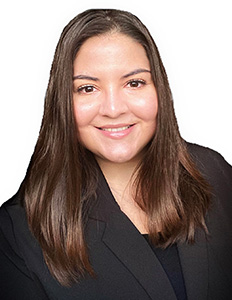Independent living may be conceptualized as a philosophy of individual control, peer support, self-help, self-determination, equal access, and individual and system advocacy, in order to maximize the leadership, empowerment, independence, and productivity of individuals with disabilities, and the integration and full inclusion of individuals with disabilities into the mainstream of American society (Rehabilitation Act, 1973). Federal regulations mandate that people with intellectual and developmental disabilities (I/DD) have a right to live as independently as possible and that providers help a person reach this goal through the supports and services provided throughout their lifetime (Developmental Disabilities Assistance and Bill of Rights Act of 2000, P.L. 106-402; IDEA, 2004). These supports and services are required to begin in school programs as part of a student’s Individualized Education Program (IEP) and continue to be required in adult services through the Home and Community Based Services Waiver’s final rule (Home and Community Based Services, 2014). Although these guidelines seek to enhance the level of autonomy and independence experienced by people with I/DD, DiGennaro Reed et al. (2014) identified a variety of variables that may continue to pose barriers to an individual’s ability to live independently. These researchers conducted an anonymous survey of 152 senior citizens, paid staff (e.g., professionals, paraprofessionals, advocates), and family members of individuals with disabilities who identified personal safety, assistance with household skills, assistance with medications, assistance with daily living skills, fire safety, loneliness, and severe weather safety as some frequent barriers to independent living.

Although previous research has identified some barriers to independent living, it is the responsibility of the person’s team to identify individualized skills that will address these barriers and better promote independent living. The team responsible for designing and implementing the supports and services must follow a person-centered planning approach, which includes the individual with I/DD and their natural supports (e.g., friends and family members). The first step in identifying the skills to target for instruction is to conduct an assessment to identify a person’s current level of performance and develop supports that will enhance skills that are needed.
There are a variety of assessment approaches that a team may use. A publicly available criterion-referenced assessment that is often used to identify skill deficits, including community skills, is the Assessment of Functional Living Skills (AFLS) (Partington & Mueller, 2012). The AFLS consists of six protocols, all of which focus on fostering independence for adults. While these publicly available assessments provide comprehensive breakdowns of various skills, they must be purchased, require training to effectively conduct the assessment, and may not capture individualized details of a person’s skills.
If these publicly available assessments are not appropriate, the team may assess a person’s skills using individualized task analyses. A task analysis breaks down any complex skill or a series of behaviors into smaller, teachable units (Cooper, Heron and Heward, 2007). Task analyses can be one of the simplest and most individualized ways to assess community skills related to independent living. Once the team has identified the person’s skill deficits, the next step is to develop the supports and services that will be provided through formal or naturalistic teaching opportunities.
Formal instruction is seen most often within school and in-home support programs where teaching is delivered in a systematic way. This type of instruction typically occurs in a controlled environment (e.g., classroom) and is most often used when a person is first learning a skill. An example of formal instruction may involve working with a person on the skills required to maintain a conversation. The prepared lesson will focus on specific social skills and may use a script or hypothetical examples.
While formal teaching is a crucial aspect of skill acquisition, instruction should not be limited to only formal opportunities. It is vital to use naturally occurring situations and events to reinforce skill acquisition in the person’s everyday life. Naturalistic or incidental teaching takes place in the person’s everyday environment by using naturally occurring teaching opportunities that occur throughout the day. An example of naturalistic teaching may include a money management lesson while a person is at the mall with a caregiver. If the person expresses interest in purchasing new shoes, naturalistic teaching would involve the caregiver using this opportunity to provide meaningful instruction towards enhancing the person’s skills so they are better able to complete the transaction independently in the future.
When planning for formal or naturalistic instruction, the team must simultaneously plan for generalization across various settings, people, and situations over time (Cooper, Heron, and Heward, 2007). The goal of generalization is to ensure that the learner will be successful with performing these skills independently when faced with novel situations in the future. Because there are many variables in the community, planning for generalization is critical.
The last step in the instructional planning phase is to set mastery criterion and program for progress monitoring. Mastery criterion refers to the level of independence at which the team would consider the skill to be learned (Cooper, Heron and Heward, 2007). This criterion is established based on the individual needs of the learner and it is important to note that not every learner will define success or independence in the same way. The team should take a person-centered approach and base the mastery criterion on the person’s goals and abilities. Progress monitoring involves periodically assessing a previously mastered skill and determining if the person demonstrates the same level of mastery over time. Consistently monitoring for success, even after skills have been mastered, ensures that lapses in acquisition or generalization can be identified and addressed.
Independent living may be considered the ultimate goal for people with I/DD and the team must continue to keep this goal in mind when designing supports and services. Through a person-centered planning approach, the team can identify how to best help a person achieve this goal. It is important that the individual and the natural supports available to the person play an active role in both the development and implementation of supports. Although this independent living goal may not be realized by all, there are approximations of independent living that allow for the supports and services to be tailored to best meet the needs of the individual. Individuals with I/DD may live with their natural/biological families and receive supplemental supports to enhance their independence, supervised community programs with 24/7 staffing supports, supported living arrangements with various levels of staffing supports, or independently and receive minimal supports elsewhere. A person may demonstrate greater independence towards independent living when supports and services are focused on skill acquisition. As the needs of a person change throughout their lifetime, the paid and natural supports that are available to them should be customized through the person-centered planning process to provide the greatest level of independence possible.

Jessica Basir, MS, BCBA

Todd Merritt, PhD, BCBA-D
Todd Merritt, PhD, BCBA-D, LBA-NY is Director of Behavioral Services and Jessica Basir, MS, BCBA, LBA-NY, CT is a Behavior Intervention Specialist at The Arc Westchester, the largest agency in Westchester County, NY, supporting individuals with developmental disabilities, including those on the autism spectrum, and their families. For more information, visit www.ArcWestchester.org.
References
Cooper, J. O., Heron, T. E., & Heward, W. L. (2007). Applied behavior analysis. Upper Saddle River, NJ: Pearson Merrill Prentice Hall.
Developmental Disabilities Assistance and Bill of Rights Act of 2000, 42 U.S.C. § 15001 et seq. (2000). www.congress.gov/106/plaws/publ402/PLAW-106publ402.pdf
DiGennaro Reed, F. D., Strouse, M. C., Jenkins, S. R., Price, J., Henley, A. J., & Hirst, J. M. (2014). https://doi.org/10.1007/s40617-014-0011-6
Home and Community Based Services, 42 C.F.R. Parts 430, 431, 435, 436, 440, 441, and 447 (2014). www.govinfo.gov/content/pkg/FR-2014-01-16/pdf/2014-00487.pdf
Individuals with Disabilities Education Act, 20 U.S.C. § 1400 (2004). https://uscode.house.gov/view.xhtml?path=/prelim@title20/chapter33&edition=prelim
Partington, J. W., & Mueller, M. M. (2012). The Assessment of Functional Living Skills. Marietta, GA: Stimulus Publications.
Rehabilitation Act, 29 U.S.C. § 701 et seq. (1973). https://dhs.sd.gov/drs/Section%207%20Rehab%20Act%202014.pdf




